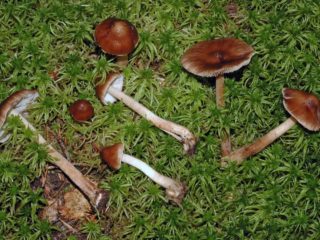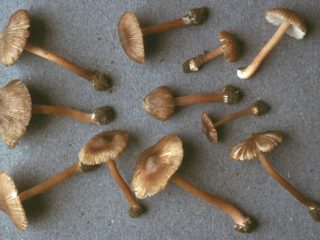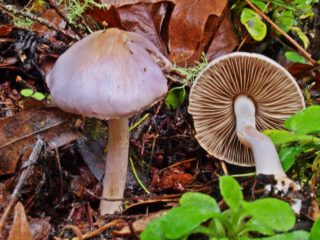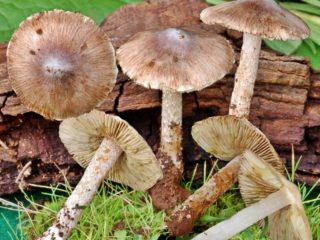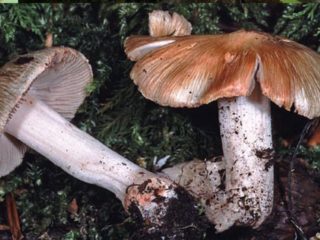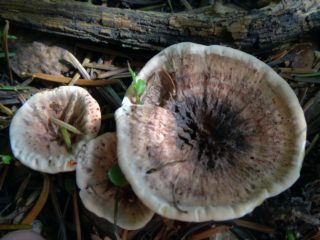Content
Fiber is a fairly large family of lamellar mushrooms, representatives of which are found in many regions of the world. For example, fibrous fiber grows in almost all regions of Russia. This mushroom is highly poisonous, so every lover of a quiet hunt needs to know it and be able to distinguish it from similar edible species.
What does fibrous fiber look like?
The fibrous fiber rarely grows to a significant size. The diameter of the mushroom cap is usually about 3-5 cm, sometimes it can increase to 7-8 cm. The shape is bell-shaped, with drooping edges and a convex central part, with numerous longitudinal-radial cracks, often the edges are torn. The color of the cap is straw yellow, the central part is dark, brown, lighter along the edges. On the reverse side there are numerous mushroom plates. In young specimens, they are white, with age they become greenish-yellow or olive, and later brown.
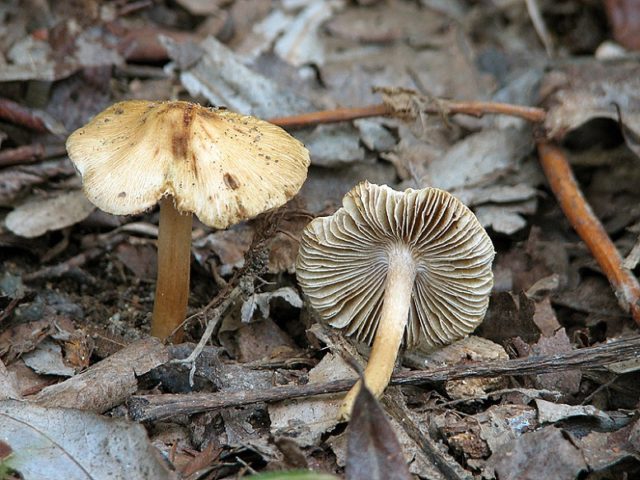
Fibrous fiber poses a serious danger to humans
The leg is cylindrical, solid, even, up to 10 cm long and up to 1 cm thick, has a longitudinal fibrous structure. At a young age, it is white, later it becomes the same color as the hat. In the upper part, there is a mealy bloom; closer to the base, small flakes-scales appear on its surface. The flesh of the mushroom is white, does not change color at the break.
Where does fibrous fiber grow
In addition to Russia, fibrous fiber is found in North America, in some regions of South America, and also in North Africa. On the territory of Eurasia, it can be found everywhere. It grows from mid-summer to late autumn and is found in all types of forests.
Is it possible to eat fibrous fiber
You cannot eat fibrous fiber in food. The pulp of this mushroom contains muscarine, the same poisonous substance found in the red fly agaric. At the same time, its concentration in the tissues of the fibrous fiber is about 20 times higher. When it enters the body, the poison acts on the digestive organs and the nervous system, causing their toxic damage, which in some cases can be fatal.
A short video about one of the types of fiberglass can be viewed at
Poisoning symptoms
The first signs of fiber poisoning may appear within half an hour after the fungus enters the human body. Here are the main symptoms that indicate muscarine may have entered the body:
- Upset stomach, diarrhea, vomiting, often bloody.
- Profuse salivation.
- Sweating.
- Convulsions, trembling limbs.
- Constriction of the pupils.
- Heart rhythm disorders.
- Incoherent speech, wandering eyes.
In severe cases, pulmonary edema and respiratory paralysis can occur, which can be fatal.

Eating fibrous fiber is deadly
First aid for poisoning
At the first suspicion of fiber poisoning, it is necessary to immediately deliver the victim to the nearest hospital or call an ambulance. Before the arrival of doctors, measures must be taken to reduce the toxic effects of fungi on the victim's body. To get rid of food debris in the stomach, you will have to flush it, letting the victim drink a large amount of slightly salted water, and then induce vomiting. And you should also limit his physical activity, put him to bed and warm him up.

If you suspect poisoning, you must urgently call an ambulance
To reduce the absorption of toxic substances in the stomach, it is necessary to give the poisoned person any enterosorbent, for example, activated carbon. Its amount is taken at the rate of 1 tablet per 10 kg of human weight. You can use other drugs, for example, Polysorb-MP, Enterosgel or similar.
Conclusion
Fibrous fiber is a dangerous poisonous mushroom. At a young age, it is sometimes confused with ryadovki and champignons, however, upon closer examination, you can always notice certain differences between them. When collecting mushrooms, you should never rush and take everything, even if the harvest is better, it will be less, but guaranteed safe.
